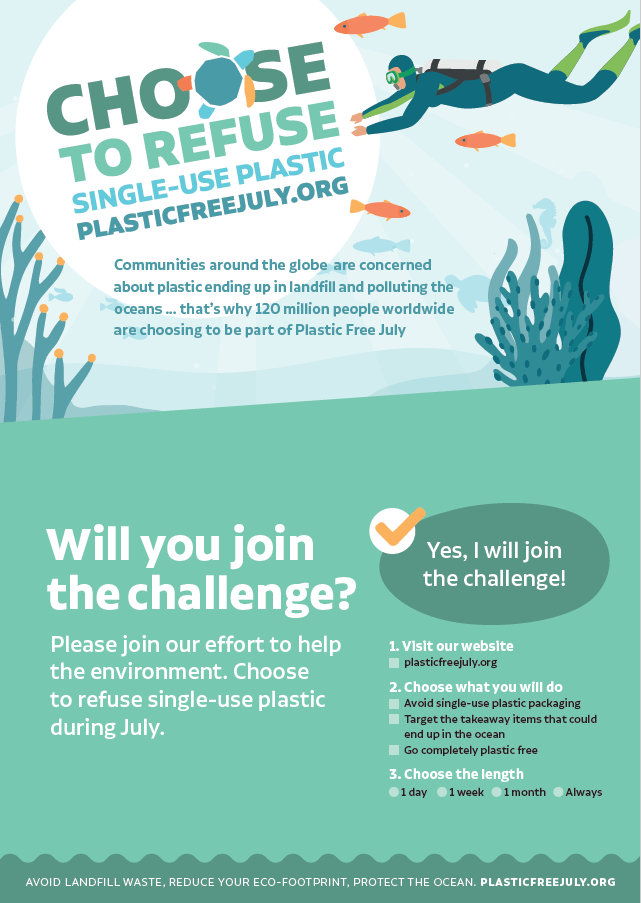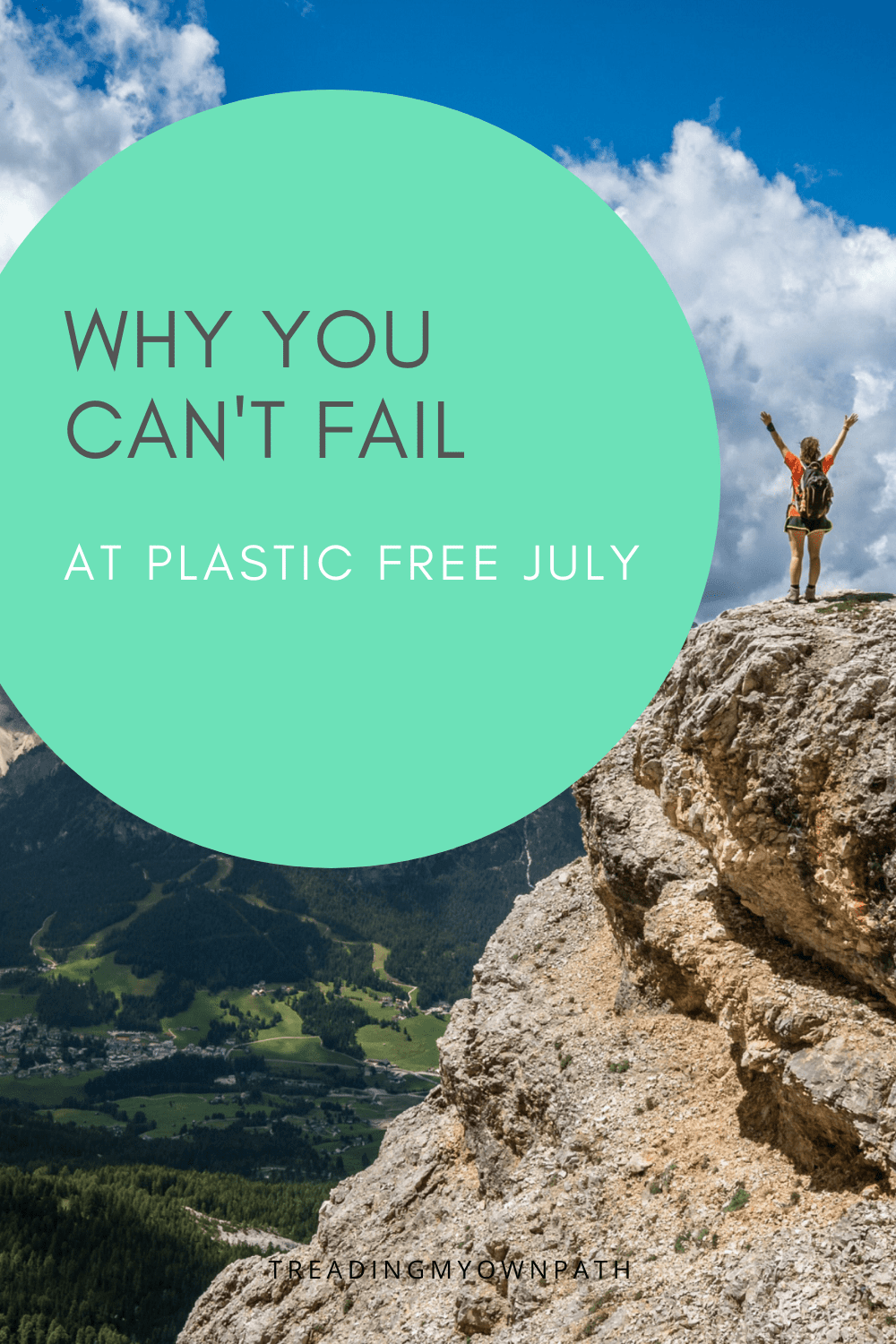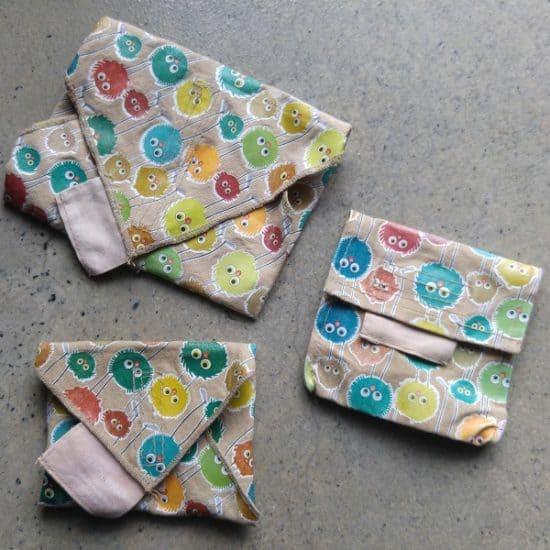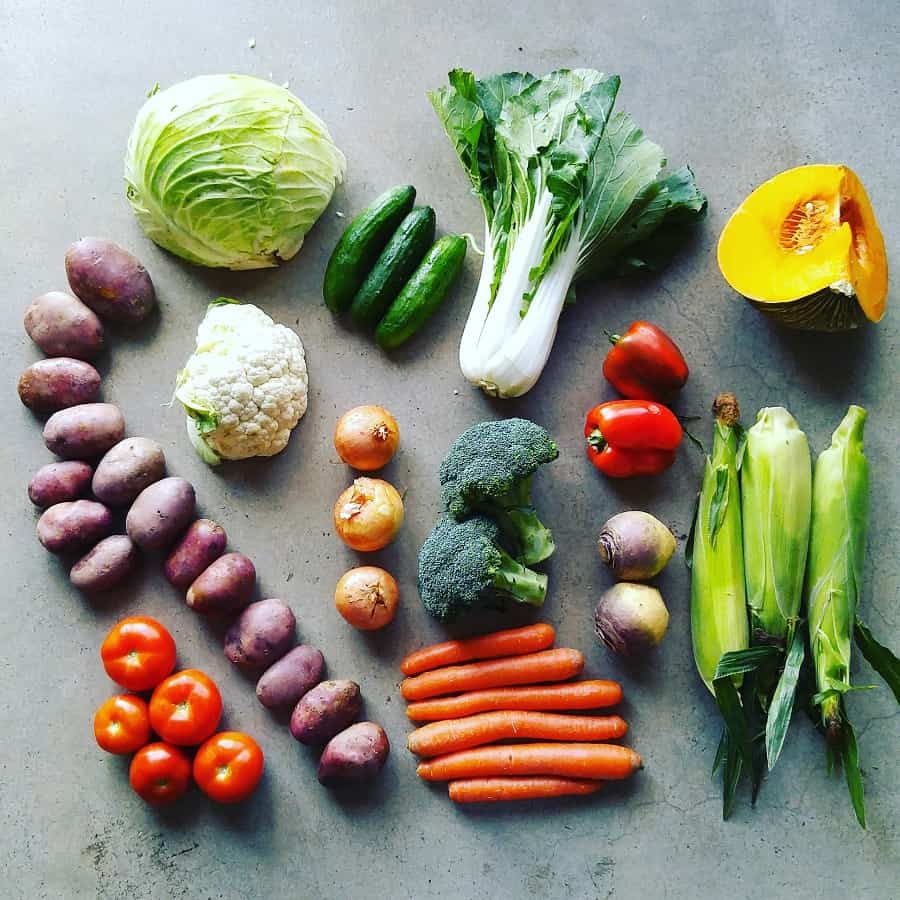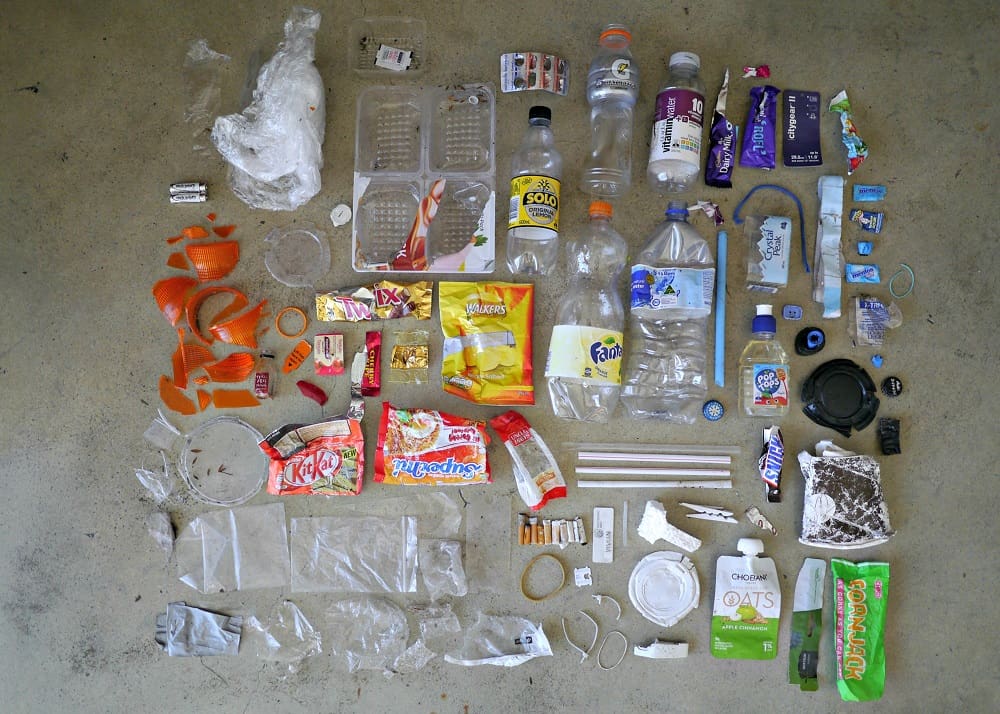The ultimate list of plastic free swaps
If your looking for ways to ditch the single-use plastic, and look for ideas to lower your plastic footprint, this list is for you.
Good news – there are swaps and substitutions to be made everywhere!
Before we begin – something important to know. We can’t shop our way to a more sustainable lifestyle. None of us need all of the reusables and plastic-free alternatives that exist in the world.
Please don’t feel like this is a list of things you ‘should’ have, that you need to go out and buy. Not everything on this list is going to suit your needs, and buying stuff you never use is the biggest waste of all. Wherever you can make do with what you have, or repurpose something, it’s the best outcome.
An item purchased thoughtfully and used often can replace a lifetime of single-use plastic, and might be worth the investment.
An item that sits in the back of the cupboard before heading off to landfill is not.
Be honest with yourself about you truly need. Rather than a shopping list, see it as a list of ideas. And don’t forget to check for second-hand options first!

This post contains some affiliate links. I do not post links to Amazon when making recommendations, ever.
Food shopping
Glass jars: my favourite are the ones I fish out of the recycling bin, or rescue from my local Buy Nothing group. They are great for both buying and storing groceries, transporting snacks and keeping leftovers.

Storage containers: there are so many options for these, and you need to consider what you’ll use them for. Many ‘bamboo’ containers use melamine as a binder, and are not recyclable, so I don’t recommend these. I find transparent (glass) containers are useful for storing leftovers, and prefer glass that is oven-safe – like Pyrex – so my containers are multi-purpose.

I find stainless steel more useful for transporting food. Some don’t have silicone seals meaning they aren’t leakproof, so consider if this is important to you before making a purchase.
A few options:
Seed & Sprout – make glass containers with bamboo lids that look beautiful (too bad I already have all the containers I need). Australian brand.

Cheeki – stainless steel lunchboxes with no plastic parts. Australian brand.
Lunchbots – make a range of stainless steel lunchboxes (some with plastic lids) including bento boxes and a kid-friendly range. US brand (website is for US orders only); they are stocked at Biome (AU) and Eqo Living (UK)
U-Konserve – large range of stainless steel lunchboxes with plastic lids (they also sell replaceable lids). US brand. Stocked at Biome (AU)
A Slice of Green – UK brand with a good range of own-brand reusable stainless steel containers. They supply other online zero waste stores: &Keep has a bigger range than you’ll find on the Slice of Green website.
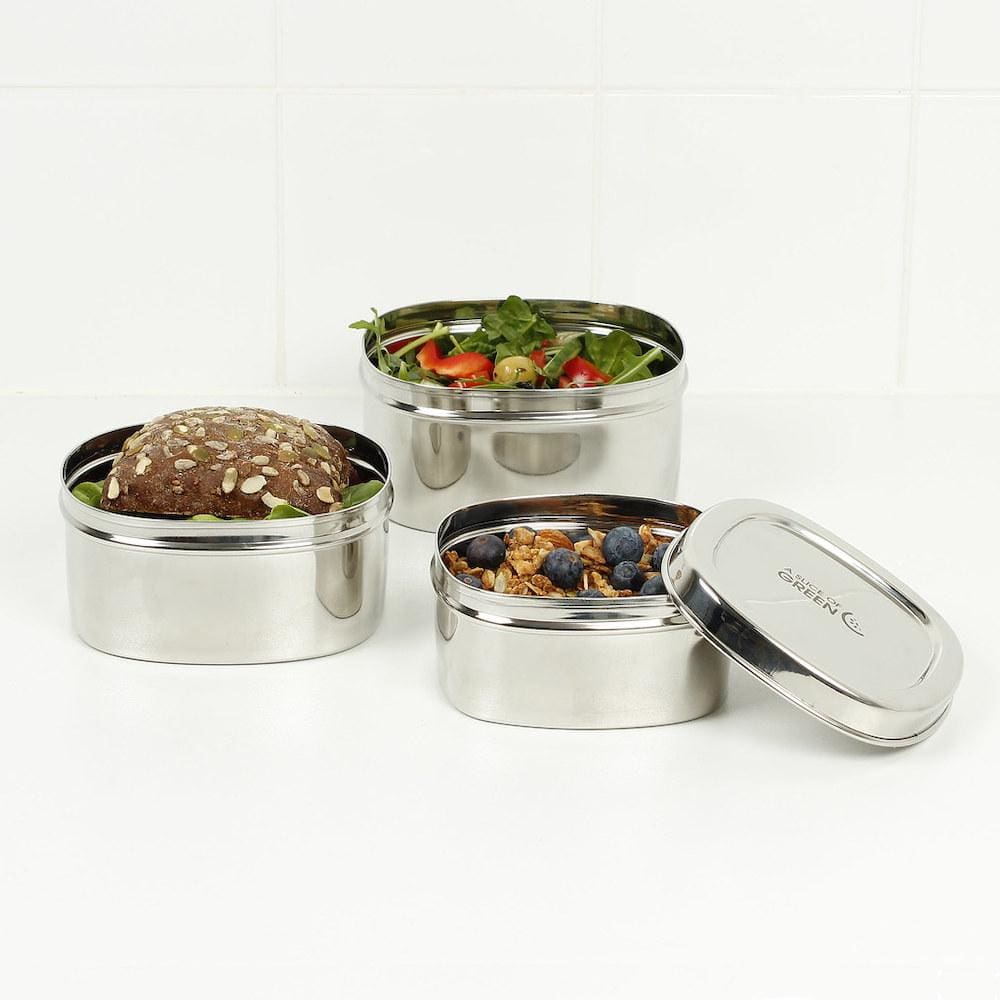
Reusable produce bags: from cloth to netting to mesh, there are lots of different options. There are plenty made from upcycled fabric – check Etsy for an upcycler making them near you.
If you’d like the mesh versions, I have and recommend Onya produce bags – they will last a lifetime (mine are 8 years old and still going strong).

I’ve also seen people use laundry bags, so if you already have a few of these, they could be an option!
Bread bags: a cloth bag works fine, as does an old (clean) pillowcase. If you want a purpose-made one, the reusable bread bags by Onya get great reviews.

Food storage
All of the items listed above are good for food storage as well as food shopping. Here are some other ideas for making sure the things that you buy keep fresh for as long as possible once you get them home.
Silicone storage bags: take up much less space than rigid containers, and the best ones are dishwasher-, oven-, microwave- and leakproof. There are lots of options with lots of price points, but this is definitely a case of getting what you pay for. If you can afford it, I’d recommend the Stasher bags.

If you’re looking at a budget option, read the reviews before purchasing.
Fabric (cotton) storage: Fruits and vegetables stored loose (without plastic and not in containers) lose moisture quickly and wild/shrivel. The Swag are bags made of layers of unbleached cotton that are for storing fruit and vegetables. The bags are dampened down and keep produce fresh for up to two weeks.

A low budget option is to wrap our produce in a damp tea towel.
Silicone lids: two options are rigid silicone lids (the Charles Viancin range are available in many kitchen stores, often with flower or fruit shapes).

There are also flexible stretchy silicone lids (like these EcoFlexiLids).
Alternatively, put your leftovers in containers (or glass jars). Or (my favourite) you could just pop a plate on top of a bowl.
Wax wraps: If you’re trying to ditch the plastic wrap (gladwrap/clingwrap/clingfilm), there are a few alternatives. Beeswax wraps (AU, UK or USA options) or vegan wax wraps (AU, UK or USA options) are popular – don’t forget to look at Etsy to support local (to you) makers too. Or you can make your own.

Food preparation
There’s no need to replace things that you already have, but if you didn’t already know that there are plastic-free versions of products, you might find this interesting.
Ice lolly molds: Onyx containers make a great range of plastic-free stainless steel products, including lolly / icy pole molds in various shapes including rockets, paddle pops and popsicles.

You can’t buy directly from the Onyx website, but the following stores have a good range: Biome (AU) , Little Acorns Mighty Oaks (UK) , The Tickle Trunk (USA)
(If stainless steel is out of your budget, there are silicone versions available (such as these ice block push-up moulds by Avanti.)

Bathroom
Toilet paper: I switched to a plastic-free brand of toilet paper called Who Gives A Crap (it’s a social enterprise that donates 50% of profits to charity). They are an Australian company that now also sell their products in the USA and UK.

(They also make kitchen towel and tissues – not things I buy, but things you might.)
Bidet: Others switch to using a bidet to reduce toilet paper use. Haven’t tried it and can’t really comment, except to say I know there are kits you can install without a plumber.
Toilet unpaper: Some people switch to reusable cloth toilet paper (often referred to as ‘family cloth’) – not something I’ve tried either, but it’s an option.

If I did this, I’d probably use old cut up towels or sheets, but there are businesses out there selling purpose-made products like this, with cute designs (a well known brand is Marley’s Monsters, who are based in Oregon, USA, but you’ll find heaps of makers on Etsy – search for ‘toilet unpaper‘. If that’s your thing!)
Toilet brush: I’ve wanted (wanted, not needed) a wooden toilet brush since forever, but I have a plastic one that does the job. Should it ever break, I’m getting this. Probably.

Dental
Bamboo toothbrush: One of the first swaps anyone who starts a less-plastic life goes to is the bamboo toothbrush. I’d suggest Brush with Bamboo, because they were one of the first companies and I find them very transparent about their ethics and choices. Their bristles are predominantly plant-based, being 62% castor bean oil and 38% nylon.

Replaceable head toothbrush: Personally, I didn’t get on with bamboo toothbrushes, and I use a toothbrush which has a replaceable head. I’ve had the same handle since 2014, and I just replace the head every few months.
The brand I use is Silvercare, which was what was available in my local store (the brand is actually Italian).
If you’re in Europe look up Lamazuna, who make similar brushes with a bioplastic handle, and also use cardboard (plastic-free) packaging.

Floss: it’s possible to buy floss in a refillable glass jar. Quite a lot of brands offer this product. If you’d like a truly compostable version, the floss is made of silk; if you’d like a vegan version the floss is usually bioplastic (not recycable or compostable). There’s also the option of peace silk (Ahimsa silk) which is considered a cruelty-free option: Geoorganics spearmint floss (UK brand) is made with this.
Interdental brushes: Piksters now sell interdental brushes in sizes 00 – 6 in bamboo (packaged in cardboard). They seem to be readily available, including at high street chemists.

Toothpaste: I’ve made my own for years (here’s my toothpaste recipe) but if DIY is not your thing, it’s possible to buy toothpaste in powder or tablet form, which means it doesn’t need the plastic tube. Again, there are now heaps of brands making these products: my suggestions would be Geoorganics (UK brand, sold in Australia by Nourished Life), or Denttabs (German brand, sold in Australia by toothtablets.com).
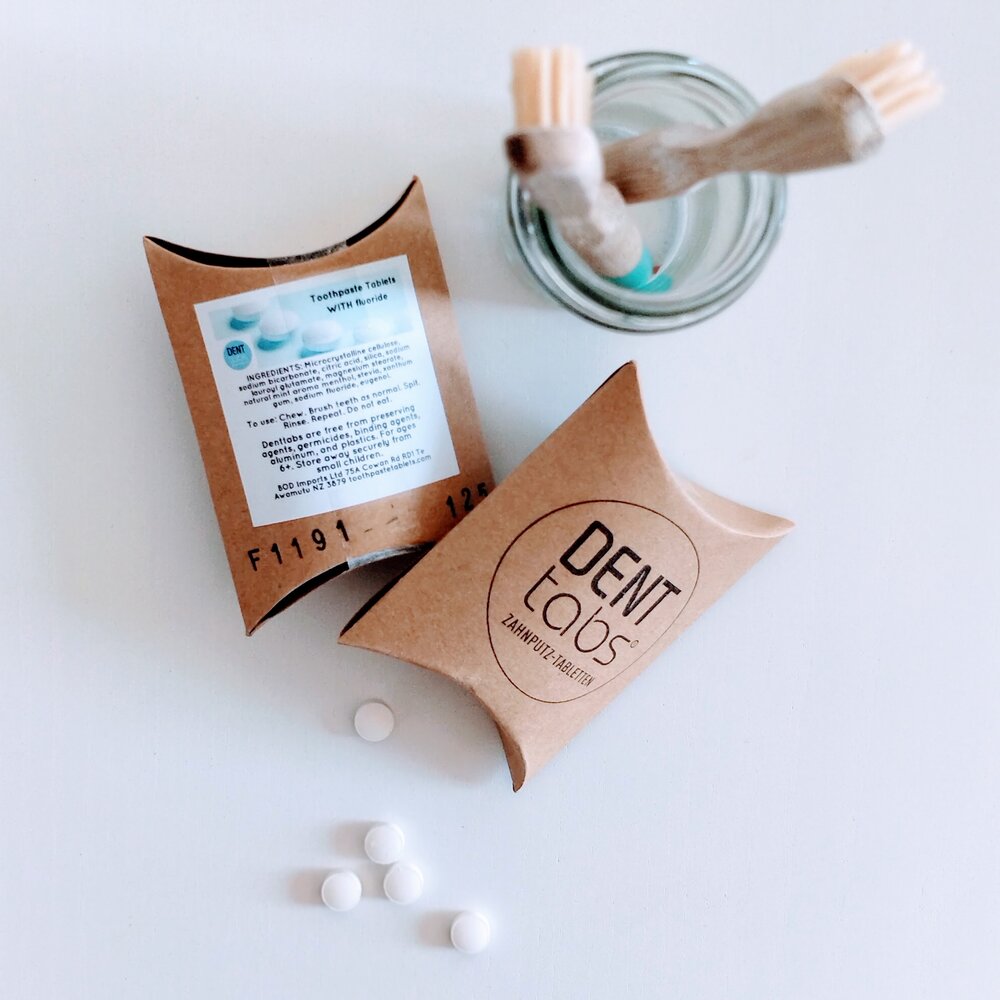
Denttabs also sell a fluoride version as well as a fluoride-free version. If you’re in the UK, &Keep has an excellent range.
Mouthwash: not something I use. There are plenty of zero waste mouthwash recipes on the internet (perhaps try this DIY mouthwash recipe by the Zero Waste Chef), but it’s also possible to buy tablet mouthwash.
Personal care
Shampoo: Solid shampoo bars do away with plastic bottles and there are now lots of options on the market. Whilst they can seem expensive, most are long lasting, so overall don’t end up costing more. It’s worth trying a few, as different hair responds differently to different products.

Having tried a few with less-than-ideal results, I settled with (and love) the Source Bulk Foods shampoo bar for my curly hair. Beauty Kubes (A UK brand, but stocked worldwide) are often recommended.
(Or, you could try the ‘no poo’ method and use bicarb or rye flour instead: here’s how it works.)
Conditioner: Solid conditioner bars are the solution to plastic bottles. Ethique bars are a popular choice and come highly recommended (they are a New Zealand company that ship worldwide).

Personally, I use a white vinegar rinse instead of conditioner, and it works as well as any conditioner that I’ve ever used.
Moisturiser: I make my own cold cream moisturiser, and lots of bulk stores sell the ingredients to make DIY products.

(Biome has an online range of ingredients that they pack without plastic.)
If DIY is not your thing, there are lots of products packaged in glass. Or you can buy solid moisturisers too (Ethique make a Saving Face serum bar that I often hear recommended).
I particularly like the Lush moisturiser bars (they are listed on the Lush website as facial oils), which can be purchased in-store with absolutely no packaging at all.
(When it comes to skincare and haircare products, a few stores sell a selection of these brands, and are also have occasional sales which make the products more affordable. Nourished Life have some Ethique bars at half price, Biome and Flora & Fauna also stock a good range.)
Safety razor: a metal razor with replaceable metal blades. There are lots of brands now selling these – I hear reports that cheap ones rust. One of the original and most-trusted brands is Parker; their products are sold in lots of stores.
Period products
Menstrual cups: the first zero waste swap I ever made (way before zero waste became a movement) back in 2003. Back then, there were two medical grade silicone options: the Mooncup (UK brand) and the Diva Cup (Canadian brand – and the one I bought). There was also the Keeper (US brand) ,which is made of natural rubber. These days there are plenty of options, but I prefer to support the brands that led the way.

In the USA and Australia, menstrual cups are regulated by government. These have approval in Australia (country of manufacture listed in brackets):
- Juju (Australia)
- Diva Cup (Canada)
- Lunette (Finland)
- The Keeper (USA)
- Super Jennie Cup (USA)
The USA has a slightly bigger range of registered products, including all mentioned except Juju.
Menstrual pads: reusable pads are a great option, and will last 3-5 years if looked after. Almost all brands use cotton with a PUL (plastic) liner.

A few better known brands:
- Ecopads Australia – cotton, fleece and/or corduroy pads with PUL liner;
- Hannahpad Au & NZ – certified organic cotton pads with PUL liner;
- Juju (Australia) – cotton and certified organic cotton pads with PUL outer;
- Imse Vimse (Swedish brand sold in the UK) – organic cotton with PUL liner;
- Gladrags (USA) – cotton and fleece, PUL-free*;
- Hannahpad USA – certified organic cotton pads with PUL liner.
*The only brand I’ve come across that are completely plastic-free are Gladrags (US brand). I have their night pad, and it’s never leaked.
Menstrual underwear: this is underwear that has a built-in liner. I have the Modibodi brand, and I use in combination with my cup on heavier days. They are incredibly comfortable. Some more established brands:
- Flux Undies (UK)
- Modibodi (Australia)
- Modibodi (UK)
- THINX (US but sold worldwide)
- WUKA Wear (UK)
Cleaning
Cleaning products: I’m a fan of green cleaning, which uses mostly edible products like bicarb/baking soda, white vinegar, soap and a bit of elbow grease to get things clean. I’d recommend Clean Green by Jen Chillingsworth as a handy guide to recipes that work (there are lots of the internet that don’t).

Cleaning brushes: there are heaps of wood, metal and/or coconut fibre options. I use a Safix scourer (it lasts for ages and doesn’t smell, ever) and the Import.Ants range of brushes which are sold at my local zero waste store.

Unpaper towel: I don’t bother with kitchen towel or the reusable version made of cloth, but it’s a popular option. Look on Etsy to find local sellers to support (some also use upcycled fabric, which is a bonus).

Laundry
Laundry powder: I buy this from the bulk store. Another alternative is to use soap nuts/soap berries – slightly sticky berries that have a natural saponin content. (You pop a few in a small bag in your washing machine with your clothes, and they will last a few washes.)
Pegs: If you’ve been using plastic pegs, at some stage they’ll likely need replacing (plastic pegs break down in sunlight – bit of a design flaw). Wooden pegs are pretty widely available, but if you’re looking for an unbreakable, buy-it-once-and-it-lasts-forever option, metal pegs are now an option.
There’s different grades of stainless steel include marine grade if you live near the ocean. Pincinox are a French brand and the original stainless steel option, but lots of brands sell wire pegs that are more affordable.
Sock hangers: If you’re restricted to a balcony and don’t have a clothes line, it’s possible to buy stainless steel sock hangers (like this one from Biome).

Microfibres: Something else you light like to consider is a Guppyfriend laundry bag. It’s less of a ‘swap’ and more of an investment – it’s purpose is to stop microfibre plastic pollution in waterways.

You pop your synthetic fibre clothing (things like polyester and nylon) inside, then put the whole thing in the washing machine, and wash as normal. It traps the fibres and stops them getting into the ocean.
(If you’re in Australia, the cheapest place to buy one of these is – randomly – Kathmandu.)

One-stop shops
I’m a big fan of independent stores that sell zero waste and plastic-free products because they believe in the cause, rather than because they see it as a marketing tactic. I can only list the stores I’ve heard of – no doubt there are many more fantastic options:
Australia:
- Biome
- Flora & Fauna
- Nourished Life
- Spiral Garden
- Urban Revolution (my local Perth-based store)
UK:
USA:
This is by no means an exhaustive list of all the products that exist, but hopefully it gives you some options not only for useful swaps, but also for independent businesses to support. Just remember, when it comes to reducing waste, less is always more!
Now I’d love to hear from you! Are there any obvious swaps that I’ve missed, or any products that you’d say you couldn’t live without? Any swaps you’ve made that you regret, and want to warn us about?! Any questions? Anything else to add? Please share your thoughts in the comments below!
[leadpages_leadbox leadbox_id=140b48fc6639c5] [/leadpages_leadbox]





